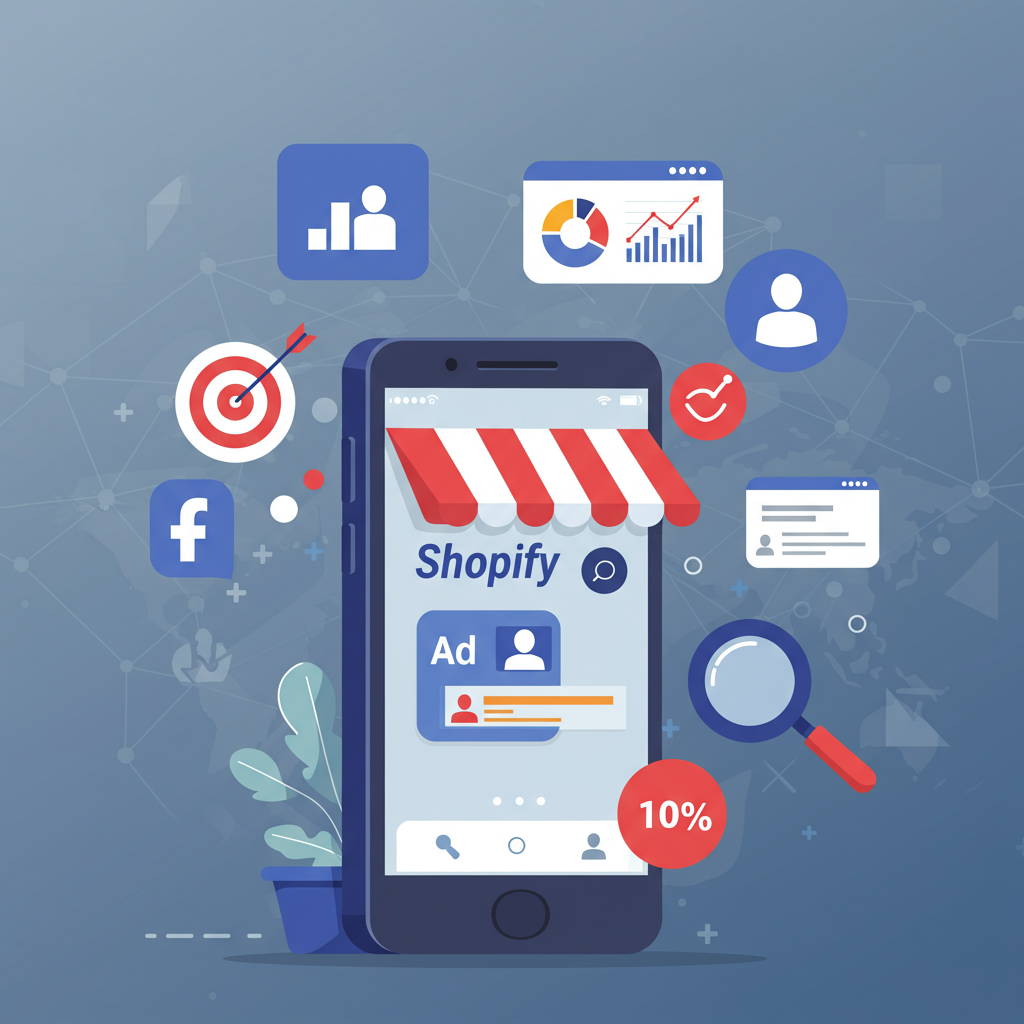Unlock Sales and Reach Your Ideal Customers with Precision Advertising
As a Shopify merchant, you’re constantly looking for ways to grow your sales and reach more customers.
One of the most powerful tools at your disposal for achieving this is Facebook Ads.
However, simply running ads isn’t enough; effective targeting is the secret sauce that transforms clicks into conversions.
Today, I want to walk you through how to master Facebook Ads targeting specifically for your Shopify store.
My goal is to help you connect with the right people, at the right time, with the right message.
First, let’s understand the foundation: the Facebook Pixel. This small piece of code, easily installed through your Shopify admin, is absolutely crucial.
It tracks visitor behavior on your store, from viewing products to adding items to their cart and making purchases.
This data is invaluable for creating highly effective custom audiences and understanding your customer journey.
Once your Pixel is firing correctly, you can start exploring the vast array of targeting options available in Facebook Ads Manager.
We’ll begin with the core targeting categories: Demographics, Interests, and Behaviors.
Demographics allow you to define your audience by age, gender, location, language, and even more granular details like education level or relationship status.
For instance, if you sell women’s fashion, targeting women aged 25-45 in specific urban areas makes perfect sense.
Interests are where you can really start to hone in on what your potential customers care about. Think about hobbies, brands they like, or even types of media they consume.
If you sell eco-friendly products, you might target interests like “sustainable living,” “organic food,” or “environmental protection.”
Behaviors, on the other hand, are based on actions people take on Facebook and beyond, such as purchase behavior, digital activities, or even travel patterns.
This can be incredibly powerful for identifying people who are already in a buying mindset or have shown interest in online shopping.
Now, let’s dive into the more advanced, and often most profitable, targeting strategies: Custom Audiences and Lookalike Audiences.
Custom Audiences are built from your own data sources. The most common and effective for Shopify merchants are website visitors.
You can create audiences of everyone who visited your site, or segment them further: people who viewed a specific product, added to cart but didn’t purchase, or even spent a certain amount of time on your site.
Another powerful Custom Audience is your customer list. Uploading your email subscribers or past purchasers allows you to target them directly with special offers or new product announcements.
You can also create Custom Audiences based on engagement with your Facebook page or Instagram profile, video views, or even lead forms.
Once you have a solid Custom Audience, you can leverage Lookalike Audiences. This is where Facebook finds new people who are similar to your existing valuable customers or website visitors.
For example, if you create a Lookalike Audience based on your purchasers, Facebook will identify users with similar characteristics and behaviors, expanding your reach to highly qualified prospects.
You can choose the size of your Lookalike Audience, typically ranging from 1% (most similar) to 10% (broader reach). Starting with 1-2% is often recommended for higher quality.
A critical aspect for Shopify is setting up Dynamic Product Ads. These ads automatically show relevant products from your Shopify catalog to people who have shown interest in them on your site.
This is a form of retargeting that is incredibly effective for recovering abandoned carts and driving repeat purchases.
When structuring your campaigns, I always recommend a multi-layered approach.
Use broad interest targeting for prospecting new customers, then retarget website visitors with specific product ads.
Exclude past purchasers from your prospecting campaigns to avoid showing them irrelevant ads and wasting budget.
Always remember to test different audience segments. What works for one product or niche might not work for another.
A/B test your audiences, ad creatives, and offers to continually optimize your performance.
Analyze your results regularly in Facebook Ads Manager. Look at metrics like Cost Per Purchase, Return on Ad Spend (ROAS), and Conversion Rate.
These insights will guide your future targeting decisions and help you scale your successful campaigns.
Don’t be afraid to iterate. Digital advertising is an ongoing process of learning, adapting, and refining.
By diligently applying these targeting strategies, you’ll not only increase your Shopify sales but also build a stronger, more engaged customer base.
I truly believe that mastering Facebook Ads targeting is one of the most impactful skills a Shopify merchant can develop.
What do you think about this article? I’d love to hear your thoughts and experiences with Facebook Ads for your Shopify store.






